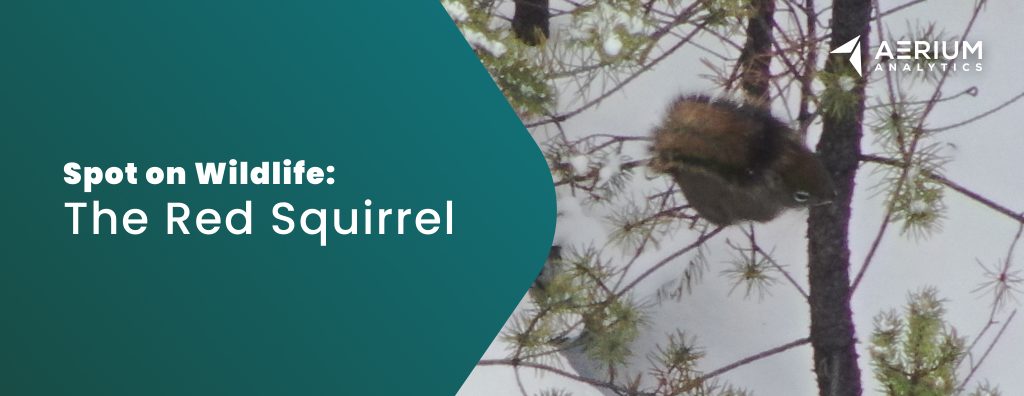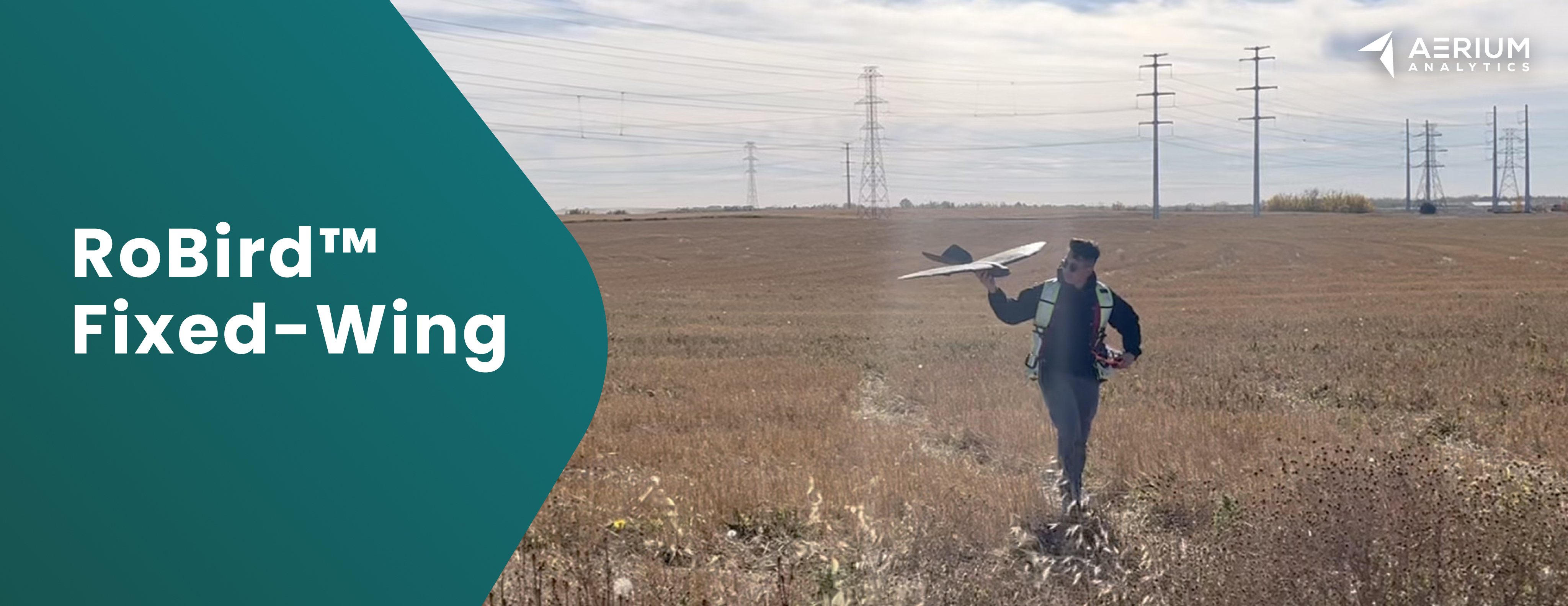
Spot on wildlife: Red Squirrel
In this series, we’ll be sharing more about the wildlife we’ve encountered during our wildlife sweep operations. These species play a crucial role both nationally and globally, making it essential to highlight their importance and the need for conservation. Drone-based solutions have transformed how we approach wildlife management, providing new insights and improving outcomes. We’ll dive deeper into both the species we’ve spotted and the innovative technology enhancing these operations.
The “Boomer”
Red squirrels, scientifically known as Tamiasciurus hudsonicus, are a common sight across Manitoba’s forests. With their vibrant reddish fur and white bellies, they’re easy to recognize — and their loud, chattering calls have even earned them the nickname “boomer.”
These small, tree-dwelling mammals measure about 28 to 35 centimeters long, including their bushy tails. They’re noticeably smaller than gray and fox squirrels, but what they lack in size, they make up for in personality and energy. Red squirrels play an important role in Alberta’s ecosystems, helping to spread seeds and support forest growth.
Habitat and Foraging Behaviour
Red squirrels are commonly found in coniferous and mixed forests, thriving in areas abundant with pine, spruce, and fir trees. They are highly adaptable and can also be spotted in urban parks and residential areas where suitable trees are present.
They primarily feed on the seeds of conifer cones but are also known to consume nuts, berries, fungi, insects, and occasionally bird eggs. Unlike gray squirrels that create multiple small caches, red squirrels often establish a single, large central food storage area, known as a “midden,” where they accumulate food supplies for the winter months.
SOURCE: Orkin Canada
Reproduction and Lifespan
Typically, red squirrels have one to two litters per year, with each litter consisting of four to five young. While they can live up to eight or nine years under ideal conditions, most wild red squirrels have a lifespan of around three years, facing challenges such as predation and harsh weather conditions.
Known for their feisty and territorial nature, red squirrels are quick to defend their food caches and nesting sites. They exhibit behaviors such as tail flicking, chattering, and foot stomping to ward off intruders, including other squirrels and potential predators. Despite their small size, they are not hesitant to confront threats much larger than themselves.
SOURCES: OFNC & Canada’s Local Gardener magazine
Role in the Ecosystem
“The Boomers” play a crucial role in forest ecosystems, particularly in seed dispersion and forest regeneration. By storing seeds and nuts, some of which are never retrieved, they facilitate the growth of new trees and contribute to the health and sustainability of forests.
SOURCE: The Canadian Encyclopedia
Red squirrels are a dynamic and integral part of Canada’s wildlife. Their behaviors, from food caching to territorial displays, not only highlight their adaptability but also underscore their importance in maintaining the ecological balance within forested regions.
Drones Transforming Wildlife Management
Wildlife management plays a critical role in forestry, agriculture, energy and aviation—ensuring safety, protecting assets, and preserving ecosystems.
Traditional monitoring can be time-consuming, but drones are changing the game by providing faster, more accurate data.
- In forestry, drones streamline wildlife surveys, reducing inspection times while helping detect habitats and prevent human-wildlife conflicts.
- In agriculture, they assist in monitoring crops, detecting pests early, and preventing wildlife-related damage. For aviation, drones enhance airfield safety by identifying and tracking wildlife activity, allowing for timely interventions to mitigate risks.
- In the energy sector, drones play a crucial role in monitoring wildlife near power infrastructure, such as wind farms and transmission lines. By conducting aerial surveys, they help detect at-risk species, assess habitat impact, and support compliance with environmental regulations—ensuring safer and more sustainable operations.
Innovating for a Balanced Ecosystem
Understanding and protecting such species is vital for preserving biodiversity and maintaining ecological balance. Through innovative drone technology, we are proud to contribute to wildlife management efforts, offering efficient, safe, and effective solutions that support both environmental conservation and industry needs.

